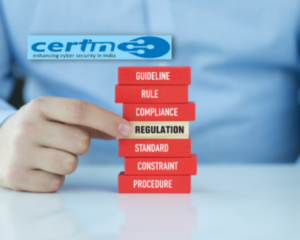As organizations continue to embrace cloud computing, the attack surface—the sum of all potential entry points for cyber threats—has expanded dramatically. In 2025, minimizing this attack surface is no longer optional; it’s a necessity. With cyberattacks growing in sophistication and frequency, securing your cloud environment requires a proactive, multi-layered approach.
In this blog, we’ll explore the top 5 strategies to minimize your cloud attack surface in 2025, focusing on actionable steps that security professionals and CISOs can implement today. From continuous monitoring to zero-trust principles, these strategies will help you build a resilient cloud security posture.
Why Reducing Cloud Attack Surface is Critical in 2025
The Expanding Cloud Ecosystem and Its Risks
The cloud ecosystem is growing at an unprecedented rate. Organizations are adopting multi-cloud and hybrid cloud strategies, deploying countless applications, and generating massive amounts of data. While this growth brings flexibility and scalability, it also introduces new risks.
Every new cloud service, application, or user account expands your attack surface. Misconfigurations, over-permissioned accounts, and unmonitored APIs can create vulnerabilities that attackers exploit. According to recent studies, 90% of organizations experienced a cloud security incident in the past year, highlighting the urgent need to reduce attack surfaces.
Also Read: Understanding and Mitigating Identity Attack Surface in Cloud Environments | 1st of 4 | Cy5
The Role of Identity in Cloud Attack Surface
In the cloud, identities—such as user accounts, service accounts, and APIs—are the new perimeter. Attackers increasingly target identities because they provide a direct path to sensitive data and critical systems. Over-permissioned accounts, weak authentication, and misconfigured roles are common entry points for breaches.
Reducing your cloud attack surface starts with securing identities. By implementing robust identity and access management (IAM) practices, you can significantly reduce your risk of a breach.

Strategy 1: Continuous Monitoring and Asset Discovery
Importance of Real-Time Visibility into Cloud Assets
You can’t secure what you can’t see. Real-time visibility into your cloud assets is the foundation of a strong security posture. Without it, you risk overlooking misconfigurations, shadow IT, and unauthorized access.
Continuous monitoring allows you to detect and respond to threats as they emerge. For example, if a new cloud service is deployed without proper security controls, real-time monitoring can flag it immediately, enabling quick remediation.
Tools and Techniques for Asset Discovery
To achieve real-time visibility, leverage tools that automate asset discovery and monitoring. Cloud-native solutions like AWS Config, Azure Security Center, and Google Cloud Security Command Center provide comprehensive visibility into your cloud environment.
Actionable Tip: Use automated asset discovery tools to create an inventory of all cloud resources, including user accounts, service accounts, and APIs. Regularly review this inventory to identify and address vulnerabilities.
Strategy 2: Strengthening Identity and Access Management (IAM)
Implementing Role-Based Access Control (RBAC)
Role-based access control (RBAC) is a cornerstone of IAM. It ensures that users and applications have only the permissions they need to perform their tasks. By enforcing least privilege access, you can minimize the risk of privilege escalation and unauthorized access.
For example, a developer should not have access to financial data, and a marketing team member should not be able to modify production environments.
Actionable Tip: Define clear roles and permissions for all users and applications. Regularly review and update these roles to align with current job responsibilities.
Reducing Over-Permissioned Accounts
Over-permissioned accounts are a common attack vector. When identities have more access than necessary, attackers can exploit these permissions to escalate privileges and gain control over critical systems.
To reduce over-permissioned accounts, conduct regular audits of IAM policies and permissions. Use tools like AWS IAM Access Analyzer or Azure AD Privileged Identity Management to identify and remediate excessive permissions.
Actionable Tip: Implement just-in-time (JIT) access, which grants temporary permissions only when needed. This reduces the risk of over-permissioned accounts.
Automating IAM Policy Enforcement
Manual IAM management is error-prone and time-consuming. Automating IAM policy enforcement ensures consistent and secure access controls across your cloud environment.
For example, automated tools can enforce policies like requiring multi-factor authentication (MFA) for all users or restricting access to sensitive data.
Actionable Tip: Use IAM automation tools to enforce policies, monitor compliance, and remediate violations in real time.

Strategy 3: Adopting Zero-Trust Principles for Cloud Security
What is Zero-Trust in the Cloud?
Zero-trust is a security model that assumes no user or device is trusted by default, even if they are inside the network. In the cloud, zero-trust principles require continuous verification of identities and strict enforcement of access controls.
For example, a user accessing a cloud application from a trusted device must still verify their identity and meet access requirements.
Steps to Implement Zero-Trust for Cloud Environments
- Verify Identity: Require strong authentication, such as MFA, for all users and applications.
- Enforce Least Privilege: Grant only the minimum permissions necessary for each task.
- Monitor and Log Activity: Continuously monitor user and application behavior for anomalies.
- Segment Networks: Use micro-segmentation to isolate critical systems and data.
Actionable Tip: Start small by implementing zero-trust principles for your most sensitive data and applications. Gradually expand to cover your entire cloud environment.
Strategy 4: Leveraging Automation and AI for Threat Detection
How AI Enhances Cloud Security Posture
Artificial intelligence (AI) and machine learning (ML) are transforming cloud security. These technologies can analyze vast amounts of data to identify patterns, detect anomalies, and predict potential threats.
For example, AI-driven tools can detect unusual login activity, such as a user accessing a cloud application from an unfamiliar location or device.
Actionable Tip: Invest in AI-driven threat detection tools to enhance your cloud security posture. Train your security team to respond quickly to alerts and investigate suspicious activity.
Strategy 5: Learning from Successful Attack Surface Reduction Case Studies
Case Study 1: Reducing Attack Surface in a Multi-Cloud Environment
A global enterprise reduced its attack surface by implementing continuous monitoring and RBAC across its multi-cloud environment. By automating asset discovery and enforcing least privilege access, the organization minimized vulnerabilities and improved its security posture.
Key Takeaway: Continuous monitoring and RBAC are essential for securing multi-cloud environments.
Case Study 2: Implementing Zero-Trust in a SaaS-Driven Organization
A SaaS provider adopted zero-trust principles to secure its cloud environment. By requiring MFA for all users and segmenting its network, the organization prevented unauthorized access and reduced its attack surface.
Key Takeaway: Zero-trust principles are highly effective for SaaS-driven organizations.

Conclusion: Building a Resilient Cloud Security Strategy
The Importance of a Multi-Layered Approach
Minimizing your cloud attack surface requires a multi-layered approach that combines continuous monitoring, robust IAM, zero-trust principles, and AI-driven threat detection. By addressing vulnerabilities at every level, you can build a resilient cloud security strategy that protects your organization from evolving threats.
Future-Proofing Your Cloud Security
As the cloud landscape continues to evolve, so too must your security strategy. Stay ahead of emerging threats by adopting new technologies, learning from real-world case studies, and continuously improving your security posture.
In 2025, the organizations that prioritize reducing their cloud attack surface will be the ones that thrive in an increasingly complex and dangerous digital world.
Final Thoughts
Reducing your cloud attack surface is not a one-time task—it’s an ongoing process. By implementing these five strategies, you can significantly reduce your risk of a breach and build a secure, resilient cloud environment.
Remember, in the cloud, security is a shared responsibility. Take action today to protect your organization’s future.
FAQs: Minimize Cloud Attack Surface
In 2025, 90% of organizations faced cloud security incidents due to expanding attack surfaces from multi-cloud adoption, shadow IT, and identity vulnerabilities. Minimizing exposure is essential to prevent breaches targeting misconfigurations, over-permissioned accounts, and unmonitored APIs.
The 5 proven strategies include:
1. Continuous monitoring & asset discovery
2. Strengthening IAM with RBAC
3. Adopting zero-trust principles
4. AI-driven threat detection
5. Learning from case studies
Prioritize real-time visibility and least privilege access.
Identities (user/service accounts, APIs) are the #1 attack vector—80% of breaches exploit over-permissioned roles, weak MFA, or misconfigured access. Attackers use compromised credentials for lateral movement and data exfiltration.
Top tools for continuous monitoring:
AWS Config
Azure Security Center
Google Cloud Security Command Center
Automated discovery helps detect shadow IT and misconfigurations.
Role-Based Access Control (RBAC) enforces least privilege, ensuring users/apps have only necessary permissions. This limits damage from compromised accounts and prevents privilege escalation attacks.
Zero-trust assumes “never trust, always verify”—requiring MFA, micro-segmentation, and continuous authentication. It reduces attack surface by eliminating implicit trust in users/devices, even inside the network.
AI analyzes behavior patterns to flag anomalies like unusual logins or data access. Tools like AWS GuardDuty and Azure Sentinel automate threat detection, reducing response time by 70% (per Microsoft research).
1. A service account with admin rights leaking sensitive data
2. A developer accessing production databases unnecessarily
Regular IAM audits and just-in-time (JIT) access mitigate these risks.
A SaaS company implemented zero-trust by:
Enforcing MFA for all users
Segmenting networks
Monitoring lateral movement
Result: 60% reduction in unauthorized access attempts.
Multi-layered defense: Combine IAM, zero-trust, and AI monitoring
Automate compliance: Use tools like AWS IAM Access Analyzer
Learn from breaches: Update strategies based on attack trends





